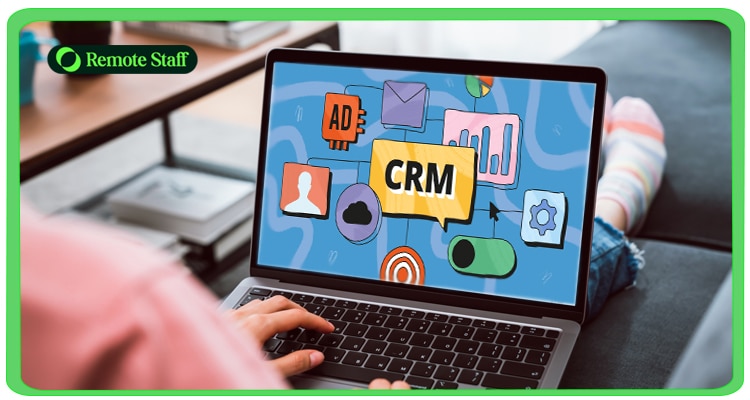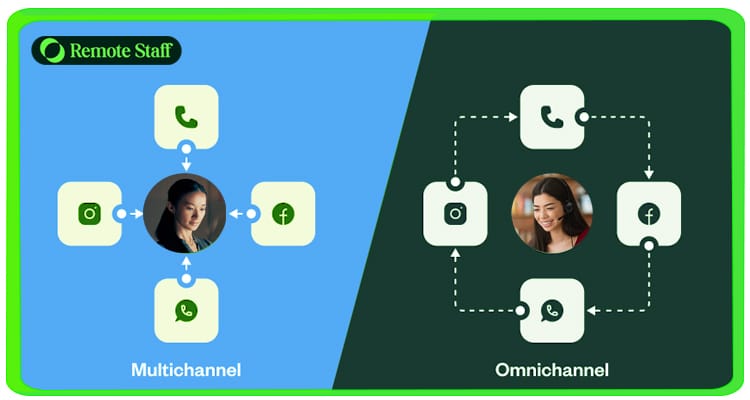(PART 2 of 3 of the CSR Mini Course)
As you develop your customer support skills from the previous module, you can explore useful strategies to complement your skills and enhance your career prospects.
The following strategies will help you go beyond just handling customer issues to building lasting relationships, increasing customer loyalty, and delivering standout experiences – which all premium clients put a premium on.
A. Proactive Customer Service Strategies
The most sought-after CX representatives are able to anticipate customer needs and address issues before they arise.
Identifying and anticipating customer needs
Below is a step-by-step guide to help you understand, identify, and anticipate your customers’ needs:
1. Practice Active Listening.
Pay close attention to the customer’s words – as well as non-verbal cues that hint at their emotions, like their tone.
Repeat key points to confirm your understanding during the conversation.
2. Ask Open-Ended Questions
Coax more details out of the customer by asking questions that require more than a “yes” or a “no.”
For example: “Can you tell me more about the challenges you’re facing with our product?”
3. Summarize
At the end of the exchange, summarize what they’ve said to show that you understand and validate their feelings. For instance, “It sounds like you’re having trouble with X, is that correct?”
By following these steps, you gain a better understanding of the customer’s situation and emotions, helping you anticipate further needs and address issues early.
Techniques for proactive communication
Never lose control of a customer interaction with the following proactive techniques:
Use Positive Language
Frame your responses positively.
Instead of saying, “I can’t do that,” try, “What I can do is…” This encourages a more constructive and solution-oriented conversation.
Use Empathetic Responses
Acknowledge the customer’s feelings by using empathetic language.
Phrases like “I can understand how that would be frustrating” help build rapport and show you care about their experience.
Ask Clarifying Questions
When confused or in doubt, get more details about the customer’s issue.
This doesn’t just help you gather necessary information but also demonstrates your commitment to understanding their needs.
Using technology to implement proactive customer service (CRM systems, automated notifications)
You can also use CRM systems, automated notifications, and data analytics to deliver more proactive customer service.
CRM Systems for Customer Insights
Use CRM software to track customer interactions, preferences, and past issues. This data allows you to personalize support and anticipate customer needs more accurately.
Data Analytics for Predictive Support
Leverage data analytics to identify patterns and predict common issues.
By studying trends, you can proactively reach out to customers who may face similar challenges and offer solutions before problems occur.
Self-Service Resources via AI Chatbots
If your company uses chatbots, review the customers’ responses to the questions. This can help you see which matters or FAQs might require responses with additional tweaking.
Personalized Follow-Ups Based on Interaction History
Use CRM data to schedule personalized follow-ups for recent interactions, ensuring issues were resolved and identifying any ongoing needs.
By integrating these technologies, you can deliver more effective and timely customer support, building trust and creating a smoother experience for your client’s customers.
B. Upselling and Cross-Selling with Integrity
Many customer service roles now include upselling or cross-selling, with KPIs like sales per interaction or revenue. To meet these goals, upselling and cross-selling are key.
Here are some strategies to help you get that sale with integrity.
Key differences between upselling and cross-selling
First, let’s differentiate upselling and cross-selling.
Upselling encourages customers to buy a higher-end version of a product, providing them with better features or benefits.
For example, when a customer is looking to buy a laptop, the sales representative might suggest a model with a faster processor, more RAM, or additional storage for a higher price, explaining how these features will enhance performance and overall user experience.
In contrast, cross-selling involves suggesting related products that complement the original purchase, helping customers get more value from their buying decisions.
For example, if a customer buys a digital camera, the sales representative might recommend a camera bag, extra memory cards, or a tripod.
Ethical approaches to selling: focusing on customer value
Some CSRs may pressure customers to make a purchase just to close a sale, which can damage trust and satisfaction.
In contrast, a good sales strategy is to recommend products that truly benefit customers.
With that, here are some ethical approaches and key principles for delivering value:
Understand what the customer’s needs
Understand the customer’s needs and preferences before making recommendations to ensure your suggestions are relevant and helpful.
Be Honest
Provide clear and accurate information about products, including any potential drawbacks, to help customers make informed decisions.
Educate Customers
Educate customers by offering tips and resources to help them get the most from their purchases, positioning yourself as a trusted advisor rather than a salesperson.
Personalized Recommendations
Tailor your suggestions based on individual customer preferences and past purchases, showing that you value their unique needs.
Building trust: How to avoid overpromising during upselling
One effective CX strategy to build trust during upselling is to provide honest, practical recommendations that align with the customer’s needs.
Set clear expectations by accurately describing the product, focusing on relevant benefits, and mentioning any limitations upfront.
Also, use simple language to keep customers informed without overwhelming them.
Lastly, don’t make promises you can’t keep as you want to foster trust and confidence.
This transparent approach leads to better customer relationships that can boost the overall results you deliver – and as a result, your customer service career.
C. Utilizing Data and Analytics to Enhance Customer Experiences
Analyzing customer data reveals patterns and preferences, helping you personalize interactions, improve processes, and proactively address issues in your customer service career.
This also demonstrates your ability to make data-driven decisions that boost customer satisfaction and loyalty.
Here’s how you can apply data and analytics to enhance your customer service career:
Gathering and analyzing relevant customer data
Analyzing data from customer interactions, transactions, and feedback improves the overall customer experience.
This data includes purchase history, browsing behavior, customer service interactions, social media engagement, and survey responses.
By examining this information, you can identify patterns such as common preferences and recurring issues.
These insights allow you to personalize interactions, enhance products or services, anticipate customer needs, and make decisions that increase customer loyalty and satisfaction.
Turning data into actionable insights
Now that you’ve gathered the data, here’s how to turn it into actionable steps to improve customer experience:
Define Goals
Start by identifying the specific goals you want to achieve, like improving customer satisfaction ratings or increasing retention. Clear objectives help focus the analysis on relevant data.
Identify Patterns
Identify recurring themes, behaviors, or pain points in the data to uncover what affects customer satisfaction.
For instance, frequent cart abandonment may suggest issues with the checkout process.
Take Action
Generate strategies based on your findings.
For instance, if customers often ask the same questions, prepare quick-reference answers. If response times are slow, adjust your workflow to handle frequent inquiries more efficiently.
Tools and techniques for tracking customer behaviors and preferences
By using various tools and techniques, you can gain insights into what customers want and need – and anticipate these well in advance.
For example, Qualtrics provides advanced survey and feedback analysis, while Medallia offers a comprehensive customer insights platform.
In addition, Google Analytics helps integrate customer experience with web data, and tools like SurveyMonkey and Typeform simplify the creation of surveys and engaging forms for better responses.
Moreover, AskNicely enables you to gather real-time feedback from customers.
We will discuss these tools further in the next part of this mini course.
D. Integrating AI and Chatbots in Customer Service
AI is transforming customer service with greater efficiency and instant support, so working with it is essential to optimize your customer service career.
The role of AI in improving customer support
AI customer service technologies like chatbots and automated response systems improve customer interactions by providing instant responses, leading to faster resolutions and higher satisfaction.
These tools can handle routine inquiries, freeing up human representatives to focus on more complex issues.
AI also analyzes customer data to identify patterns and preferences, enabling personalized support that meets individual needs.
Additionally, it offers insights into customer behavior, helping businesses address potential issues and enhance their support strategies.
Chatbot best practices and limitations
While chatbots can greatly improve the customer support you provide, it’s essential to know their limitations.
Not all inquiries can be effectively handled by chatbots, especially those that require empathy or a deeper understanding.
To maximize the benefits of chatbots, familiarize yourself with their capabilities and limitations. This knowledge will help you set accurate expectations for customers.
Additionally, regularly review chatbot interactions to identify common questions and issues. This will enable you to understand where the chatbot excels at – and where it may need improvement or human intervention.
Finally, even when using a chatbot, prioritize building relationships with customers. Use empathetic language and actively listen to their concerns when they do reach out to you.
Case studies: Successful implementation of AI in customer service
Here are a few case studies highlighting successful implementations of AI in customer service:
1. Sephora
Overview: Sephora, a top beauty retailer, launched an AI chatbot called Sephora Virtual Artist.
Implementation: The chatbot offers personalized product recommendations and virtual try-on features using augmented reality.
Customers can interact with it through the Sephora app or website to find products that match their preferences and skin tones.
Outcome: This implementation boosted customer engagement and satisfaction, leading to higher sales and a more personalized shopping experience.
Additionally, it allowed CSRs to focus on more complex inquiries, improving their efficiency by reducing repetitive tasks.
2. H&M
Overview: H&M, a global fashion retailer, used AI to enhance customer service with a chatbot.
Implementation: The chatbot helps customers search for products, track orders, and get styling advice. It answers common questions and directs users to products based on their preferences.
Outcome: This streamlined customer interaction improved response times and customer satisfaction, resulting in higher conversion rates.
It also reduced pressure on CSRs, allowing them to focus on more complex issues.
3. American Express
Overview: American Express integrated AI to improve customer support and streamline service processes.
Implementation: Their AI platform analyzes customer data and transactions to offer personalized support and recommendations. It also handles routine inquiries, allowing human agents to concentrate on more complex issues.
Outcome: This AI integration led to faster response times and improved customer satisfaction. It also allowed CSRs to focus on more complex tasks that require expertise.
E. Multichannel and Omnichannel Customer Support
A flourishing customer service career will likely involve interacting with different support channels, including chat, calls, and emails.
Being knowledgeable about these platforms makes you more valuable to your employer since it helps you provide better service.
This knowledge also helps you adapt to the company’s use of multichannel or omnichannel customer support, which is becoming more common today.
Understanding the difference between multichannel and omnichannel strategies
Understanding multichannel and omnichannel strategies is essential, as many companies are adopting these approaches.
In a multichannel approach, customer service is provided across different platforms—like phone, email, and chat—but these channels operate independently.
This means that if a customer contacts support through one channel, they might have to repeat their issue if they reach out through another channel.
On the other hand, omnichannel support creates a seamless experience, enabling customers to switch between channels without losing context.
For instance, a customer who calls for assistance can later follow up via email and continue the conversation without having to repeat themselves. This often leads to more efficient and satisfying interactions.
Best practices for seamless cross-channel customer experiences
If you’re in a cross-channel CSR role, here are some helpful tips:
Know Each Channel’s Tools
Learn the tools and shortcuts specific to each platform to work more efficiently.
Personalize Using Customer Data
Reference past interactions to provide attentive, tailored support.
Consistent Messaging
Make sure that the information provided across all channels is consistent.
Customers should receive the same answers and solutions whether they contact you via phone, chat, or email.
Set Clear Follow-Up Expectations
When switching channels (e.g., from chat to email), inform customers about the next steps and response times to reassure them and prevent confusion.
Tools for managing and integrating multiple customer touch points
Several platforms can help you deliver a seamless customer experience across various channels by integrating customer data and touchpoints in one system:
Salesforce Service Cloud
Salesforce Service Cloud combines CRM and customer service tools, allowing you to manage interactions across multiple channels with real-time data sharing, so you can keep track of customer history and preferences effortlessly.
Zendesk
Known for multi-channel support, Zendesk enables a unified view of customer interactions, making it easier to provide consistent answers whether customers reach out via phone, chat, email, or social media.
HubSpot CRM
HubSpot’s all-in-one platform integrates customer service, sales, and marketing data, allowing you to manage communication across channels while keeping customer data accessible and up-to-date.
Using these tools helps you track and respond to customer needs efficiently, improving customer satisfaction by ensuring a smooth and cohesive experience.
If you’d like to know more about these tools, please check out the next part of this mini course.
 FAQ
FAQ
Now, let’s go over some of the most frequently asked questions.
What role does emotional intelligence play in customer experience careers?
Emotional intelligence is vital in a customer service career because it helps you understand and empathize with customers’ emotions better, improving communication.
It also helps you manage your reactions so you can respond thoughtfully, even in tough or stressful situations.
How can I use soft skills to enhance technical CX solutions like AI and automation?
Soft skills can enhance your technical CX solutions by adding a human touch, helping you connect with customers, understand their needs, and personalize automated interactions for a better experience.
How can I showcase the ROI of customer experience initiatives to upper management?
When pitching to new clients or presenting results to current ones, you can highlight improvements in customer satisfaction, retention rates, and revenue growth, supported by case studies that demonstrate the impact of these initiatives on business performance.
You can also use customer feedback and metrics to show how better experiences lead to increased profitability, further strengthening your presentation.
Conclusion
By implementing the strategies above, you can improve your customer experience skills, achieve positive outcomes for your organization, and advance your career in customer service.
However, if you’re still looking for CSR work online, you can sign up with Remote Staff for the best online opportunities for Filipinos.
Remote Staff offers a range of customer service job listings tailored to your skills and preferences, flexible work arrangements, and support to help you succeed in your remote career.
You can also click this link to explore part 3 of this mini course: popular tools used by top CX professionals to boost your career opportunities and enhance your skills.
If you want to review the first part and develop high-paying skills, click this link instead.
RELATED ARTICLES:
Mini Course Part 1: 9 CX Customer Support Skills Businesses are Willing to Pay Top Dollar For
Mini Course Part 3: 15 Popular CX Tools Top CX Professionals Should Be Familiar With











 FAQ
FAQ